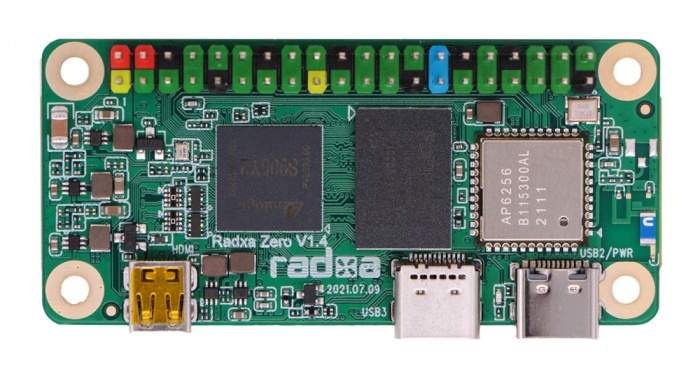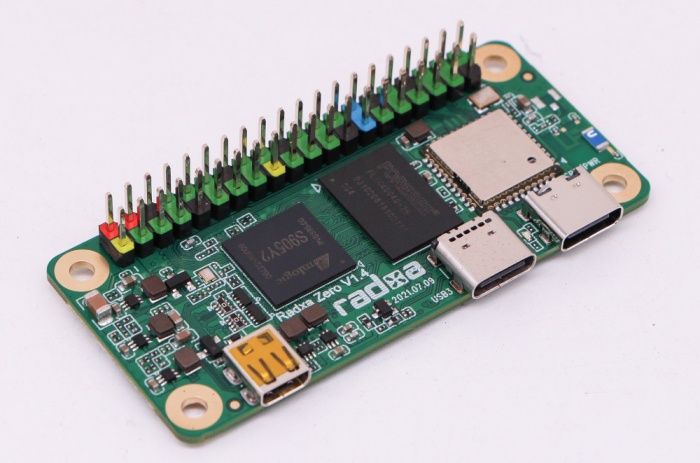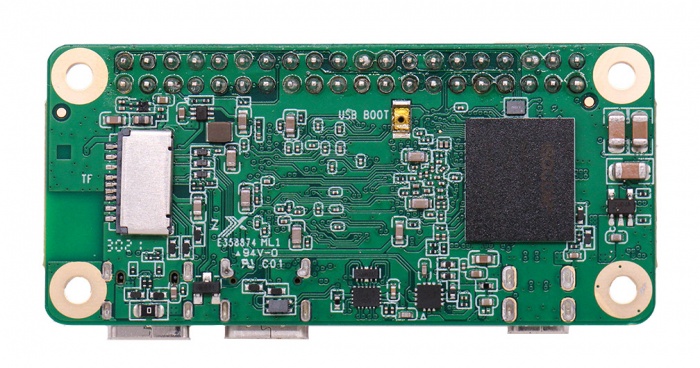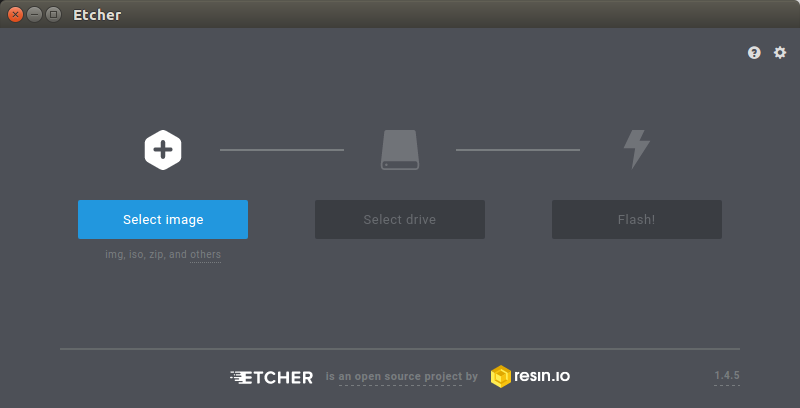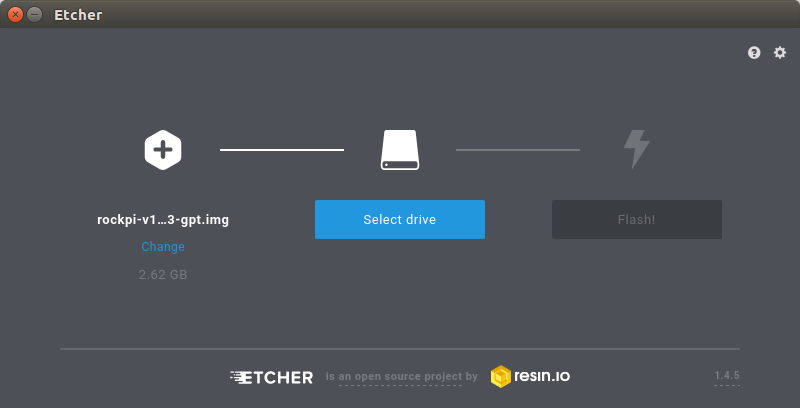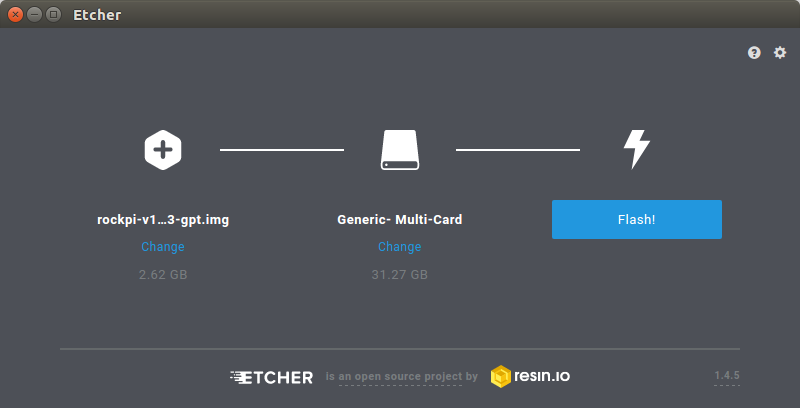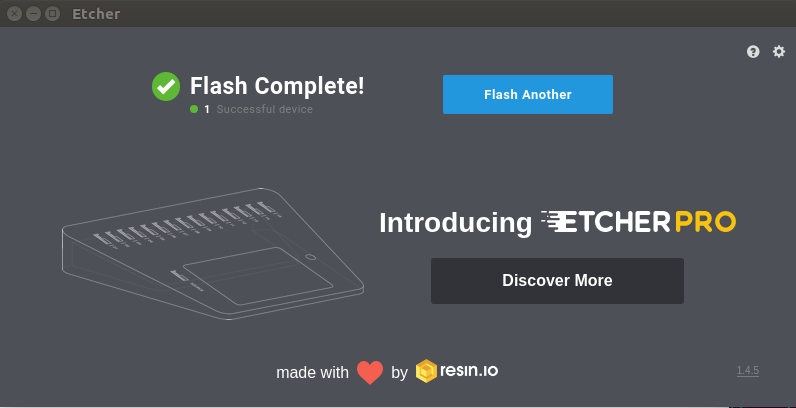Zero/getting started
Radxa Zero > Getting started
This guide is designed for new Radxa Zero user. In this guide, you can learn about the basic of Radxa Zero as well as how to prepare the board for basic use. Radxa Zero comes in different configurations and hardware revisions. As such, please make sure you have a supported board before proceeding, as some information is only applicable to a specific configuration. You can find the model and the hardware revision number on the top side of the board, while the memory / eMMC size can be identified via part number on the chip. You can learn how to identify those parts in here.
What you need
Required
- Radxa Zero main board
- Storage media:
- Built-in eMMC module, or
- A microSD card that is at least 8GB if your board doesn't have an eMMC module. You can confirm this by checking if there is a big chip soldered on the bottom side of the board.
For desktop usage we recommended at least 16GB, preferably 32GB.
- USB-C hub
- Radxa Zero comes with one USB 3.0 Type-C port, located on the top side and is close to the center of the board. This port can be expanded into multiple USB 3.0 Type-A ports as well as Ethernet.
No HDMI or DisplayPort Alternate Mode was implemented on this port, so you won't get video output even if your USB-C hub has those connectors.
- Radxa Zero comes with one USB 3.0 Type-C port, located on the top side and is close to the center of the board. This port can be expanded into multiple USB 3.0 Type-A ports as well as Ethernet.
- USB Keyboard and Mouse
- Once a USB-C hub is connected, Radxa Zero can be controlled with a full sized keyboard and mouse.
- Monitor and HDMI Cable
- Radxa Zero is equipped with a micro HDMI connector. A micro HDMI (Type-D) to HDMI (Type-A) cable is required. HDMI capable monitor/TV is recommended.
- HDMI EDID display data is used to determine the best display resolution. On monitors and TVs that support 1080p (or 4K) this resolution will be selected. If 1080p is not supported the next available resolution reported by EDID will be used. This will work with MOST but not all monitor/TVs.
- USB A to C or USB C to C cable
- The USB cable is used for powering the Radxa Zero as well as data transmission from your host PC to the Zero. Depending on host PC's USB port, you may need USB A to C(host PC is USB-A) or USB C to C(host PC is USB-C) cable.
- microSD Card Reader (required for configuration without built-in eMMC)
- For flashing the image into microSD Card.
Optional
- Power supply
- Yes, power supply is optional for Radxa Zero since the power consumption is so low it can be powered directly from host PC's USB port.
If you plan to use Zero independently from PC, you can use any 5V USB power supply with at least 1A output.
If you do power the Zero from host PC's USB port, make sure it is a USB 3.0 port so it can provide up to 900mA power. Old USB 2.0 port can only provide up to 500mA.
- Yes, power supply is optional for Radxa Zero since the power consumption is so low it can be powered directly from host PC's USB port.
- USB to TTL serial cable
- This is needed if you intend to use serial console.
Close look of Radxa Zero
- Zero front view
- Zero front with an angle view
- Zero back view
Specifications
| Model | Radxa Zero 512MB/1GB | Radxa Zero 2GB/4GB | |
|---|---|---|---|
| Processor | 64bits quad core processor Amlogic S905Y2 Quad Cortex-A53@1.8GHz ARM G31 MP2 GPU, supporting OpenGL ES 3.2, Vulkan 1.0, and OpenCL 2.0. | ||
| Memory | LPDDR4 32bit LPDDR4@3200Mb/s | ||
| Storage | microSD card (microSD slot supports up to 128 GB microSD card) | on board 8GB eMMC(2GB ram model) or 16GB/32GB/64GB/128GB eMMC(4GB ram model) microSD card (microSD slot supports up to 128 GB microSD card) | |
| Display | HDMI 2.0 up to 4K@60 | ||
| Camera | None | ||
| Wireless | 802.11 a/b/g/n (WiFi 4) BT 4.0 with on board antenna (optional external antenna) |
802.11 ac (WiFi 5) BT 5.0 with on board antenna (optional external antenna) | |
| USB | 1 x USB 2.0 Type-C OTG & Power combo port 1 x USB 3.0 Type-C HOST | ||
| IO | 40-pin expansion header 2 x UART 2 x SPI bus 3 x I2C bus 1 x PCM/I2S 1 x SPDIF 2 x PWM 1 x ADC 6 x GPIO 2 x 5V DC power in 2 x 3.3V DC power in | ||
| Others | One button for force USB boot or firmware upgrading | ||
| Power | USB-C, 5V/1A | ||
| Size | 66mm x 30.5mm | ||
Contents
[hide]Starting the board for the first time
Radxa Zero can boot from either eMMC or microSD Card. However, for beginner it's best to stick with your board's default storage, i.e. use eMMC when it is present, and microSD when eMMC is not available. This avoids the need to update U-Boot configuration to boot your chosen device, which can be challenging for the beginner.
Choose your storage option
- Flash image to eMMC
If you want to install another OS to eMMC, you will first need to erase the eMMC, then you can install any supported Linux distros from our download page. You can also follow this guide to reinstall Android to eMMC.
- Flash image to microSD card
Please follow the guide below.
Write Image
- Put the microSD card into your host computer.
- Download the flash tool,
balenaEtcher, from Downloads, or directly from their GitHub release. Choose the version that suits your host operation system. In this guide we are using Ubuntu with Etcher 1.4.5. Later version can be operated similarly.
- After unpacking the package, launch balenaEtcher with following command:
$ ./etcher-etcher-electron-1.4.5-x86_64.AppImage
If you get an error message No polkit authentication agent found you can try and start it with sudo, but do know that this is running the tool as root.
- Click Select image to choose your system image.
- IClick Select Drive to select your microSD card. Please read your options carefully, as you may lose precious data when choosing a wrong drive!
- Click Flash to begin the flashing process.
- Once the window shows
Flash Complete!you can now safely remove the microSD card from your host computer.
Boot
- To boot from microSD card, put flashed card into your Radxa Zero.
- To boot from eMMC, eject Radxa Zero from your host PC and unplug the USB-C cable from host PC.
- Connect Radxa Zero to your display with the HDMI cable. Make sure the display's input source is correctly set to your Radxa Zero.
- Connect the USB-C hub with keyboard and mouse to your Radxa Zero.
- Connect the power supply to your Radxa Zero. The board will boot immediately.
Enjoy!
Troubleshooting
- Refer Troubleshooting page
- Post your issue on our forum
- Join our discord

